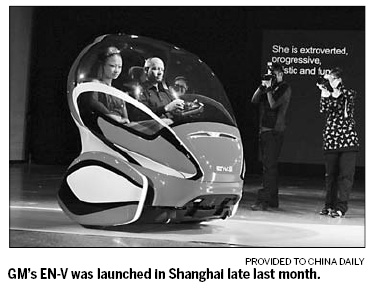Society
Wonders of the World's Fair
By Wei Tian (China Daily)
Updated: 2010-04-01 08:41
 |
Large Medium Small |
SHANGHAI - A robot that cares for the elderly, a car the size of a chair, a building made from soybeans and a pill that gives you a full medical examination are just some of the experiences awaiting visitors to Expo 2010 Shanghai.

"Everything begins with Expo," is the motto this global event has carried for more than 150 years. Previous innovations, including the steam engine, electricity, the telephone and the rocket ship, are some of the epoch-making inventions at Expos throughout the years. And the 2010 event will be no less inspiring.
"High-tech applications in urban life will be highlighted at Shanghai Expo," said Hong Hao, Expo Bureau chief.
This technology will also be used in the Expo business card, a third method of payment other than cash and credit cards.
Incandescent lights glowed from the Eiffel Tower at the 1889 Paris Expo, but Thomas Edison's invention will be eschewed for LED lighting, accounting for more than 80 percent of lighting at Expo garden.
Recycling is another innovation that is being widely adopted for the event - from staff uniforms at the German pavilion to the external curtain of the Swiss pavilion, which is made from natural products, such has soybean fiber.
The environmentally friendly concept is pushed to its limit at the London zero-carbon pavilion, a 2,500 sq m building in the UBPA (Urban Best Practice Area). The building sustains ventilation, heating and cooling by using wind, solar and thermo power.
Houses of the future will be constructed faster and use less materials and energy. An example at Expo 2010 is the Broad pavilion. The six-level building was up and running in just one day.
Meanwhile, the Japan pavilion will feature a "life wall" developed by Panasonic. This home entertainment center combines a TV, computer, DVD player and video telephone. Multiple screens can be displayed at the same time on the wall.
With more control over joint movement and walking technology, robots will be able to provide housekeeping, care and nursing services.
Another innovation by the Japanese is the iReal, a chair-sized car. A similar concept is GM's EN-V (Electric Networked-Vehicle), which weighs less than 500 kg and is only 1.5 m long.
Both models embody the concept of future urban transportation - a smaller size and greater maneuverability.
"It provides an ideal solution for urban mobility that enables future driving to be free from petroleum and emissions, free from congestion and accidents, and more fun and fashionable than ever before," said Kevin Wale, president and managing director of GM China Group.
Future medical examinations will be made easier with an ingenious tablet developed in Israel and on display at that country's pavilion.
The capsule, which is ingested, carries a micro camera that can photograph internal organs so medical examiners can determine any problems.











